Reprinted from MOLDMAKING TECHNOLOGY Magazine
Do you want your moldmaking to add more value? Do you want to solve or improve plastic injection molding problems? If you answered yes to either of these questions, then try thinking in plastic first, not steel. This new series will examine the injection molding process by breaking down the path a plastic pellet takes as it is transformed from Pellet 2 Part.
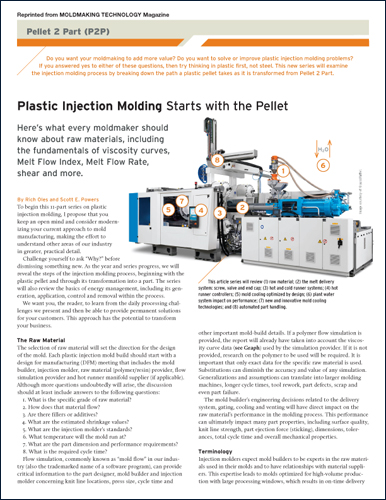 |
Part 1: Plastic Injection Molding Starts with the Pellet Here’s what every moldmaker should know about raw materials, including the fundamentals of viscosity curves, Melt Flow Index, Melt Flow Rate, shear and more.
|
 |
Part 2: Initial Pellet Contact is the Screw Here’s what every moldmaker should know about an injection molding machine’s reciprocating screw, which is often misunderstood and applied to the process incorrectly.
|
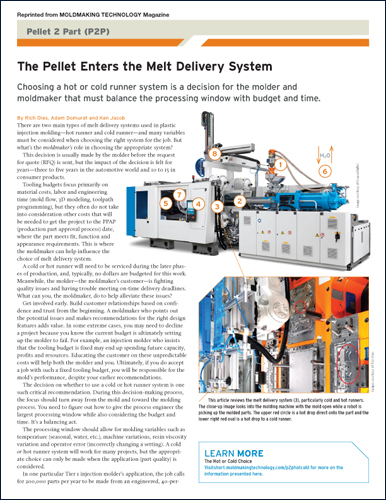 |
Part 3: The Pellet Enters the Melt Delivery System Choosing a hot or cold runner system is a decision for the molder and moldmaker that must balance the processing window with budget and time.
|
 |
Part 4: Controlling the Melt Delivery System Heat Source Understanding the heating systems along the melt delivery path is critical to setting up a robust process and properly diagnosing problems.
|
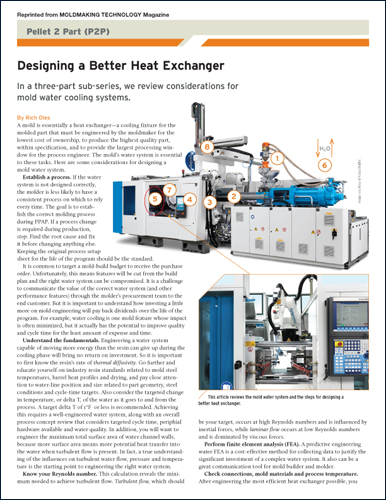 |
Part 5: Designing a Better Heat Exchanger In a three-part sub-series, we review considerations for mold water cooling systems.
|
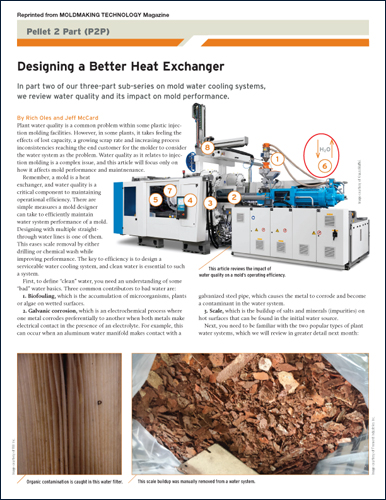 |
Part 6: Designing a Better Heat Exchanger In part two of our three-part sub-series on mold water cooling systems, we review water quality and its impact on mold performance.
|
 |
Part 7: Considerations for Assessing Robotics Requirements Knowledge of part de-molding, end-of-arm tooling construction, part defects caused by the mold-robot interface and available automation options is key for suppliers looking to add greater value.
|
 |
Part 8: Controlling Your Hot Runner Manifold System Moldmakers and molders need to better understand modern hot runner controller technology to solve processing problems.
|
 |
Part 9: Designing a Better Heat Exchanger In part three of our three-part sub-series on mold water cooling systems, we review the impact a water system can have on mold performance and part quality.
|
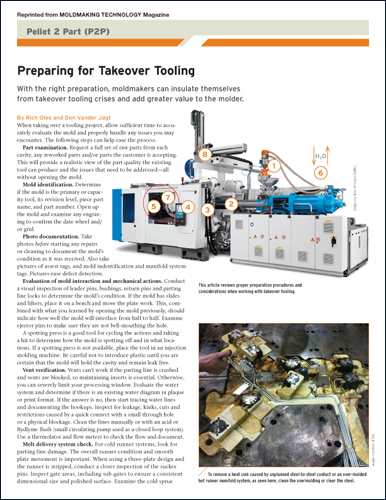 |
Part 10: Preparing for Takeover Tooling With the right preparation, moldmakers can insulate themselves from takeover tooling crises and add greater value to the molder.
|
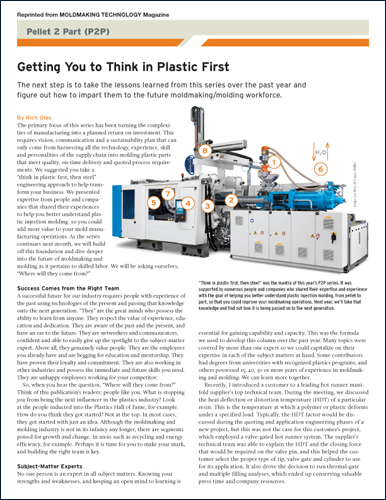 |
Part 11: Getting You to Think in Plastic First The next step is to take the lessons learned from this series over the past year and figure out how to impart them to the future moldmaking/molding workforce.
|
Pellet 2 Part Training is now offered through ALBA Enterprises
Contact Us for more information
